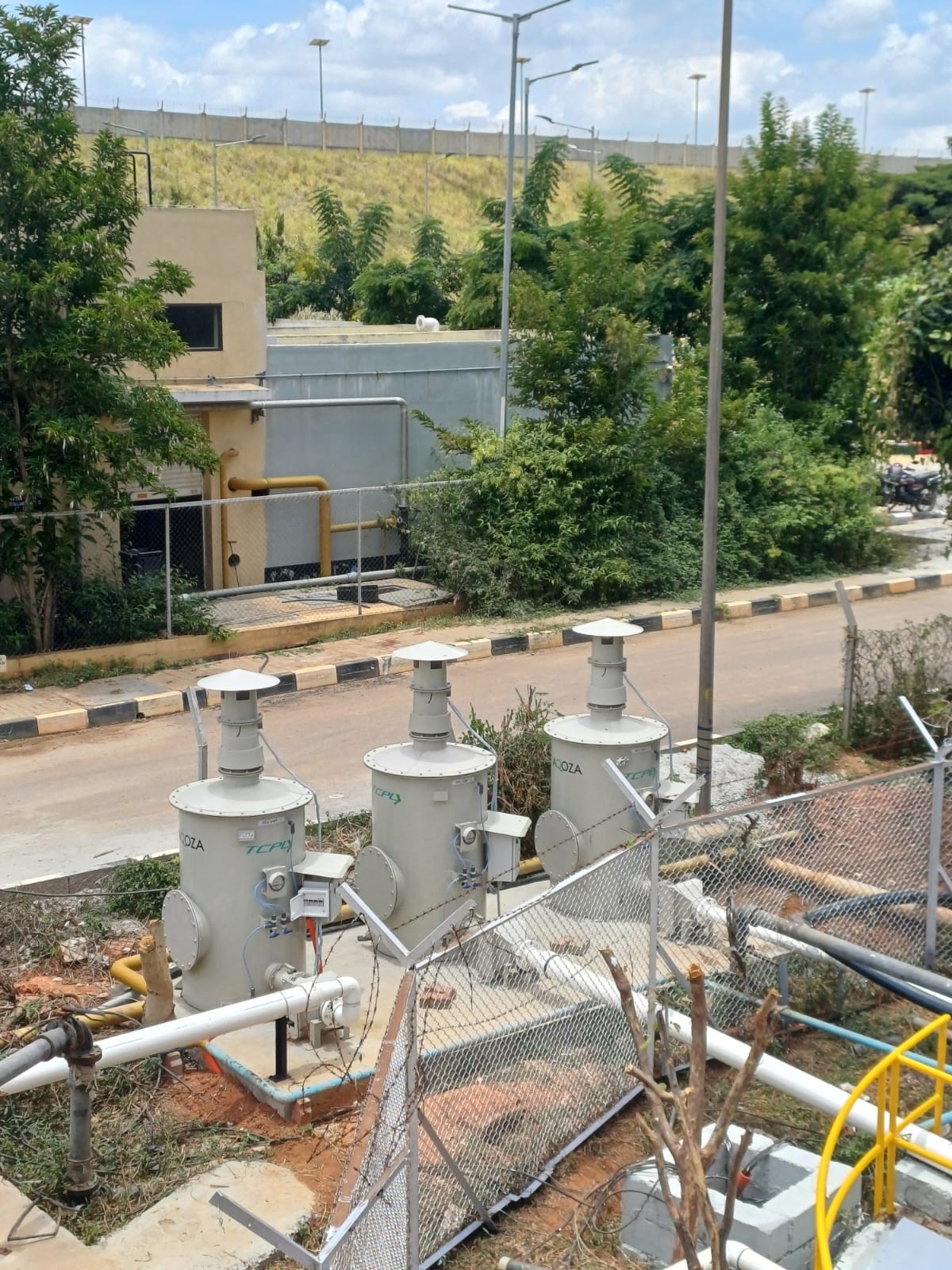Transforming Airport Environments with Innovative Odour Control Solutions: A Case Study
Zahid, Co-founder & CEO
1 Apr, 2024
Zahid, Co-founder & CEO
1 Apr, 2024

Introduction: A prominent airport in India faced significant odour issues stemming from its 1.5 MLD Sewage Treatment Plant (STP), creating discomfort for nearby Airport Security Headquarters and an internet-based taxi service's parking facility. The odours not only caused physical and mental discomfort for the officials but also led to corrosion of metal parts due to the high concentration of Hydrogen Sulfide (H2S) emissions.
Problem: The odour emissions from the 1.5 MLD STP collection tanks were not only a nuisance but also posed health and environmental concerns. The officials who are responsible for airport security, experienced discomfort during their duties due to the odour emission. Additionally, the nearby internet-based taxi service's parking facility raised complaints from taxi drivers, affecting their working conditions. The corrosive nature of the emissions led to damage to metal parts including electronics, impacting infrastructure integrity and maintenance costs.
Solution: After thorough site visits and analysis, the collection tanks of the STP were identified as the primary source of odour emissions. To address this, a 1980 m3/hr capacity odour control unit was recommended. The odour control unit worked on the principle of adsorption and utilised specially designed activated carbon engineered from high-quality coconut shells. This is highly effective in capturing gaseous molecules hence helping in removing odorous compounds. The collection tanks were covered with Fiberglass Reinforced Polymer (FRP) sheets to prevent the escape of odorous gases. The trapped gases were then directed through the odour control unit for filtration before being released into the atmosphere.
The odour control unit effectively reduced the H2S concentration from 100 ppm to less than 1 ppm at the outlet, as confirmed by the H2S sensor at the outlet. The dry filtration media eliminated the need for continuous chemical supply or effluent treatment, reducing operational complexity and costs. This specially designed filtration media has a total life of more than 3 years as opposed to normal activated carbon media which needs replacement every 6 months.
Result: The installation of the odour control unit successfully eliminated odour problems, creating a safer and healthier environment for passengers, airport employees, and security officials. The Security headquarters no longer experienced odour issues, ensuring a more comfortable working environment which further ensured the safety of the airport from any threats. The reduction in the emissions of toxic gases further reduced the threat of corroding the critical electronic equipment inside the airport which otherwise would have been catastrophic. Additionally, taxi drivers were pleased with the improved conditions at the parking facility and were able to wait peacefully to offer their services to the public.
Conclusion: The successful implementation of the odour control unit at the airport exemplifies a proactive approach to addressing environmental challenges and improving the quality of life for employees and visitors. By effectively managing odour emissions, the airport has created a safer and more pleasant environment for passengers, employees, and nearby residents. The solution not only eliminated odour problems but also addressed corrosion issues, demonstrating a commitment to environmental responsibility. Moving forward, the airport can continue to prioritize sustainability and employee well-being, ensuring a positive impact on the surrounding community.

